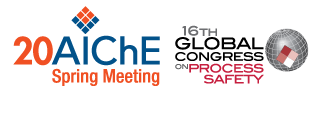

Corrosion & fouling in the quench water and dilution steam systems (DSS) of an ethylene plant are an ongoing problem within the petrochemical industry. Constant attention is required to maintain the mechanical integrity of affected heat exchanger equipment to achieve safe, reliable, and profitable operation. Traditional means of managing these systems is based on periodic sampling and analysis to determine the corrosivity and fouling likelihood throughout the quench water and dilution steam systems. In most cases, 90% of the corrosion occurs during 10% of the total operating time due to events like furnace decoking or corrosion inhibitor pumping failure. The advent of continuous online monitoring and control of neutralizing chemistry adds another layer of protection for increased system reliability.
The challenges of quality monitoring and control in a DSS include:
- potential for personnel exposure and extensive manpower required for capturing samples and tracking system changes,
- high variability of impurities causing emulsions, fouling, and corrosion,
- increasing corrosion rates due to frequent pH swings, and
- low visibility due to infrequent sampling and lack of data points.
These may be addressed through automation technology using continuous pH and water turbidity data coupled with active control of neutralizer to reduce overall corrosion rates and extend run lengths of the quench and DSS components.
Two case studies will be presented: In one an ethylene plant which was able to improve turbidity control and minimize pH swings during furnace swapping and operational upsets. A second cracker reduced the corrosion rate and emulsions in the system, thereby improving the process water quality in the quench system with lower hydrocarbon carryover to the downstream units.
Presenter(s)
Once the content has been viewed and you have attested to it, you will be able to download and print a certificate for PDH credits.
If you have already viewed this content,
please click here
to login.
Language
Pricing
Individuals
| AIChE Member Credits | 0.5 |
| AIChE Pro Members | $19.00 |
| Fuels and Petrochemicals Division Members | Free |
| AIChE Graduate Student Members | Free |
| AIChE Undergraduate Student Members | Free |
| AIChE Explorer Members | $29.00 |
| Non-Members | $29.00 |
